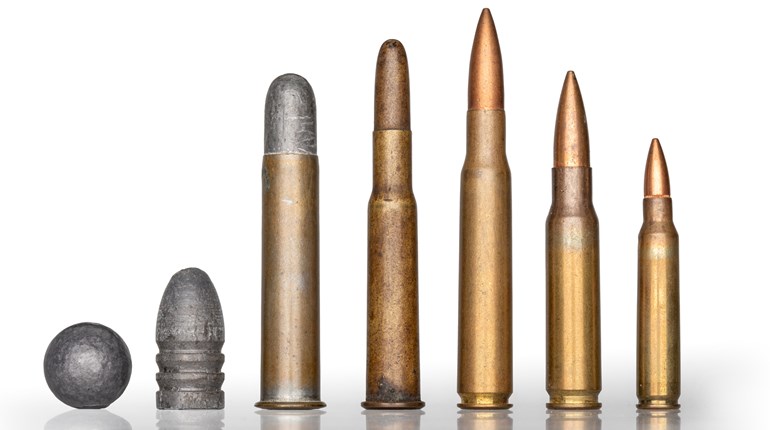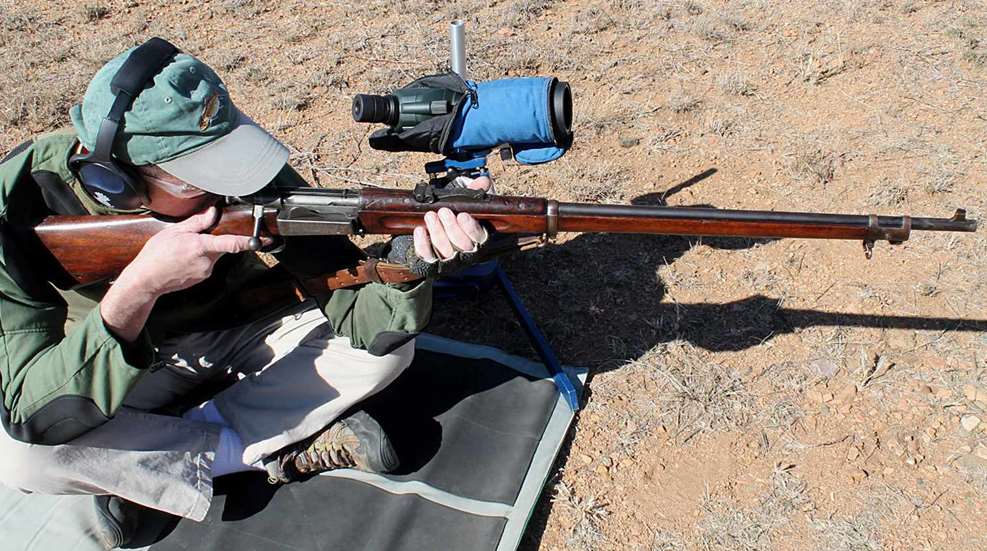
Though the Krag replaced the single-shot Springfield Trapdoor as a general-issue rifle, it is not the first repeating cartridge rifle fielded by the U.S. Army, several lever-action repeaters having seen limited use during the Civil War scramble for weapons. The U.S. Navy’s 6mm Lee Navy not-really-a-bolt-action repeater also beat the Krag into U.S. uniform, but the War Department decided the Krag would become the first repeating general-issue rifle for both the Army, Navy and Marines. The rifle also went into military service in Denmark and Norway. While not rare, the U.S. produced only about 236,000 Krag rifles, so the Krag isn’t exactly ubiquitous today. Less seen are the 5,000 Krag carbines produced for cavalry and artillerymen.
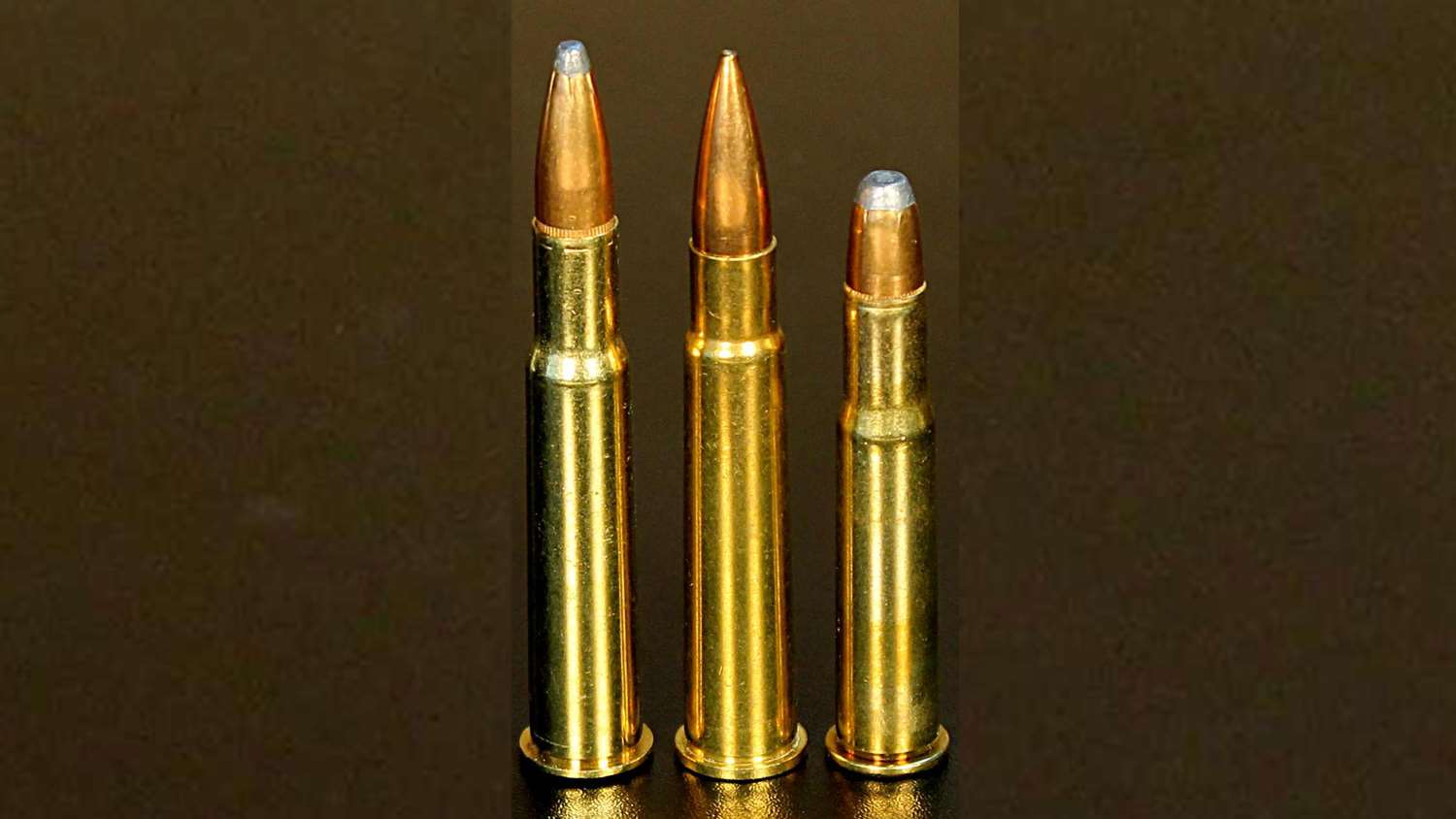
Designated Model 1892 for the year of adoption, the first Krags didn’t actually roll out of Springfield Armory until 1894. The cartridge, first baptized “.30 U.S. Army” and then renamed “Cal .30 Service (Krag) Cartridge Model 1898” after the adoption of the M1903 Springfield rifle and its .30-03 cartridge, was already at the edge of obsolescence by the time the Krag went on active duty. Though designed from the outset as a smokeless powder cartridge, early trials nonetheless utilized black powder; the “.30-40” moniker is from the days of designating black powder cartridges by bullet and powder charge. As fielded, the .30 U.S. Army cartridge launched a 220-grain FMJ RN bullet at 2000 fps (though Frankford Arsenal apparently also loaded a heavier 230-grain bullet from 1893 to 1896). Velocity increased to 2200 fps after the Spanish-American War, but the U.S. did not step up the .30-40’s performance by changing over to lighter, spritzer-type bullets as we did with the .30-03/.30-06 cartridge.
At 44,000 psi, breech pressure for the 30-40 Krag is about on par with the .303 British cartridge, in deference to the Krag bolt’s single locking lug. The bolt does use the back end of its guide rib as a second “safety lug,” but the rib does not (and shouldn’t) contact the receiver, so it provides no additional support when the bolt is closed. The root of the bolt handle also serves as a kind of back-up safety lug―in case of a failure of the bolt’s locking lug and the guide rib.
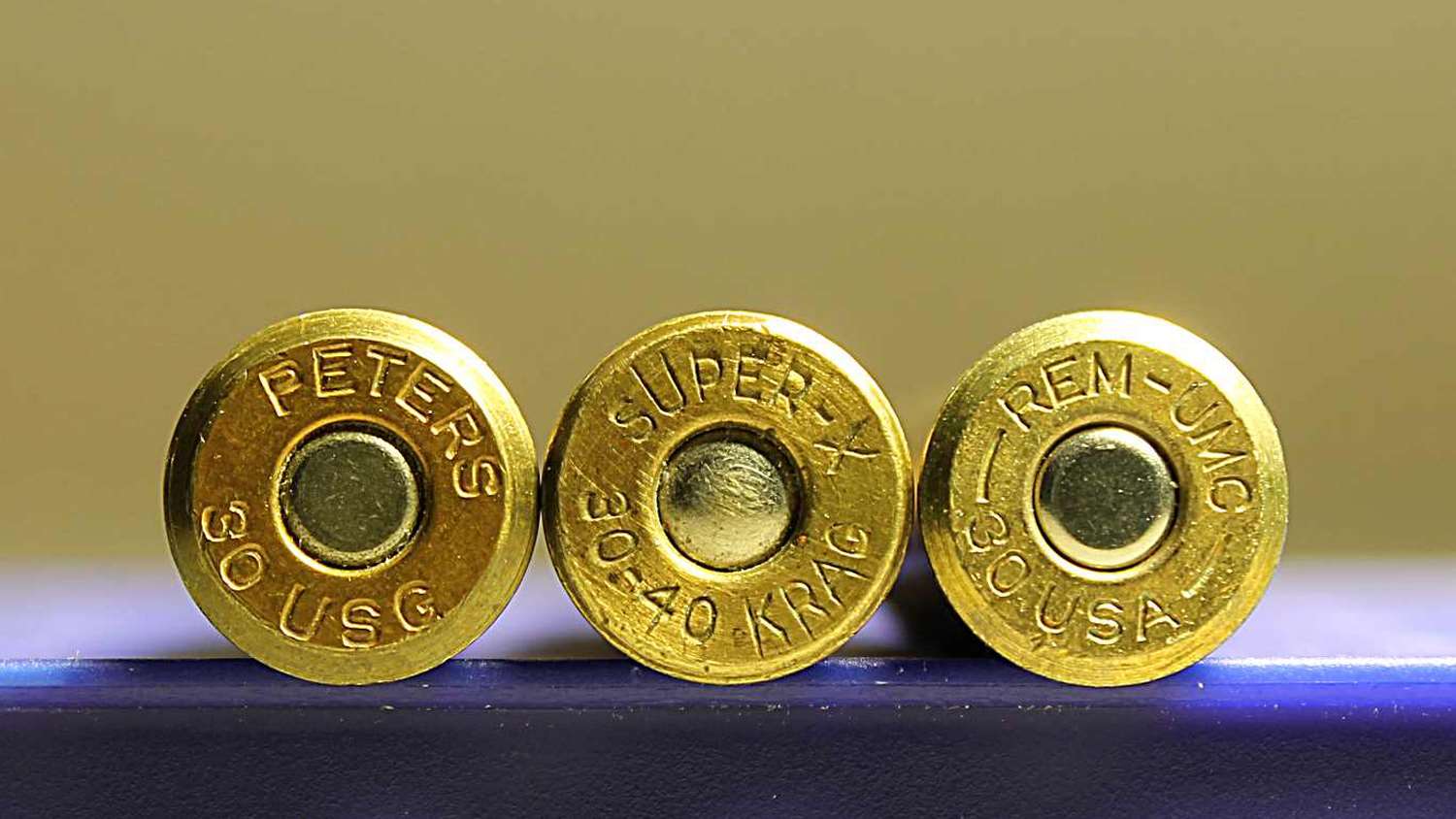
Bullets, bullets and bullets
Krag rifling twist rate is 1:10, fast enough to stabilize its heavy bullet. Original Krag barrel groove diameters were inconsistent by today’s standards, reportedly measuring anywhere from .307- to .310-inch, so we can eliminate much trial-and-error time and expense by first slugging an original bore. If groove depth of your rifle is, indeed, .308 inch then commercial jacketed bullets are the order of the day; if more than that, cast lead bullets .002 to .003 inches over groove diameter may be the way to go. Cast lead bullets of hard enough alloy can be driven to the original 2000 fps Krag velocity by the expert bullet caster, but we don’t need highest velocity for short range 200-yard Vintage Military Rifle (VMR) target competition, especially for heavy .30-caliber bullets.
If you don’t cast your own bullets, Oregon Trail offers a 200-grain, .309-inch gas checked hard cast bullet that looks promising for the Krag. I haven’t examined them yet, but they appear to be a bore-riding design, meaning the forward portion is bore size (.300 inch) while the back half is ostensibly .001 inch over the also ostensible .308-inch groove size. These are available from Midway USA.
Chambered for a long, heavy round nose bullet with a cartridge overall length (COL) of 3.089 inches, the Krag necessarily is long in the throat, causing lighter/shorter bullets to “jump” a bit before reaching the rifling, which is typically not conducive to the best precision (accuracy), though every rifle is an individual and yours may break the generally accepted rules. For this reason, heavier bullets of 180 grains to 220 grains typically perform best in the Krag. Long shanks and short noses―the major feature of round nose bullets―will start bullet ogives closer to the rifling without a long unsupported jump across the chamber throat.
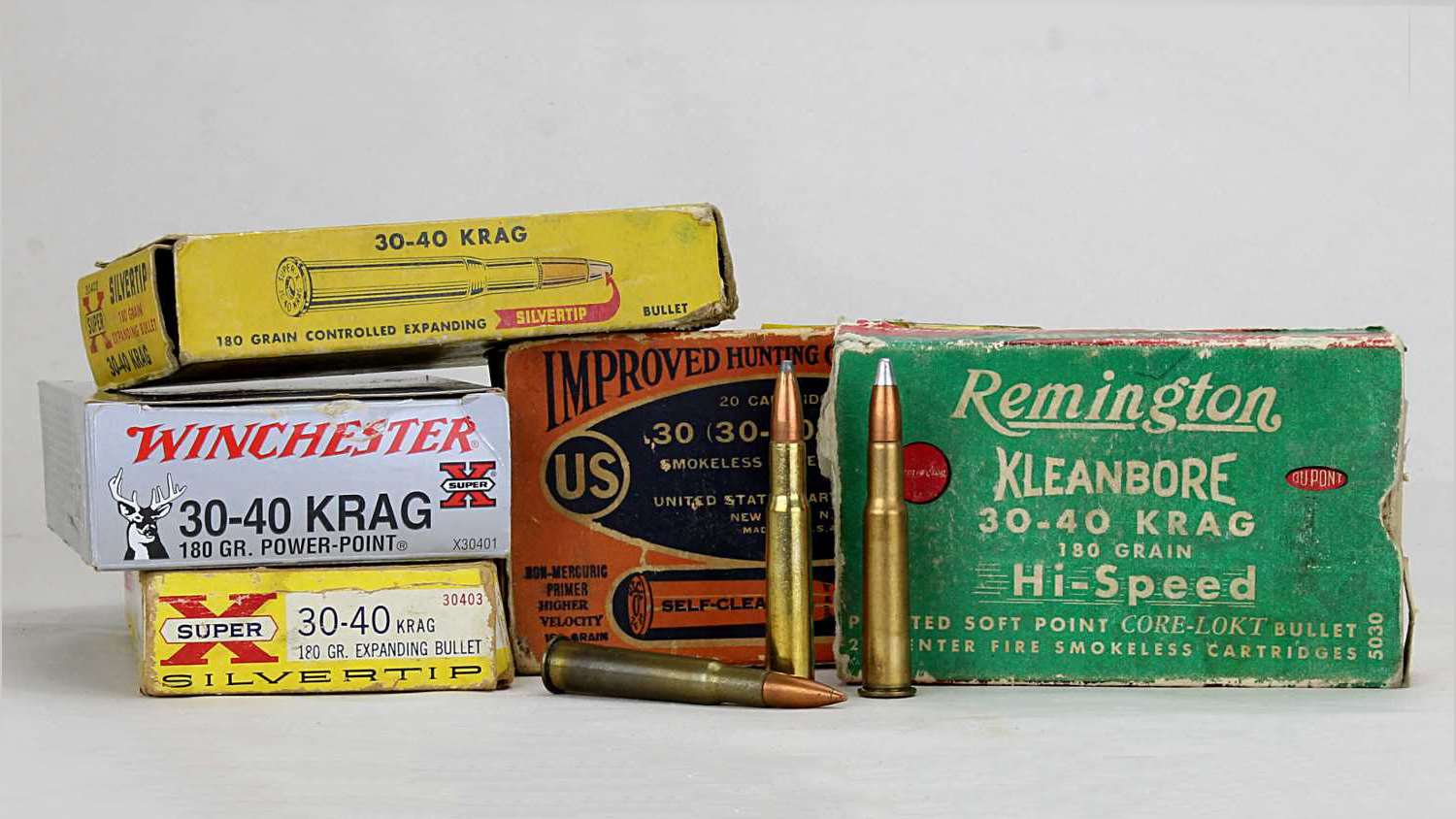
Unfortunately, among .308-inch, 220-grain full metal jacketed round nose (FMJ RN) bullets available to us, the choices are exactly one above none. Woodleigh appears to be the only source for genuine .308-inch, 220-grain FMJ RN bullets, but intended for hunting big game and at nearly $2 apiece, load development plus a few 50-round VMR matches would send the cost of shooting competition into the stratosphere. We’ll have to go with soft point hunting bullets if we want to shoot affordable RN style 220 grainers, which are available from Hornady and Sierra at around $32 per hundred. Nosler makes an almost-RN semi-spitzer Partition candidate at about $40 per 100. Balancing our tradeoffs of bullet weight, seating depth and cost, Sierra’s MatchKings from 180 to 240 grains are an excellent place to start.
After examining quite a few boxes of commercial .30-40 Krag ammo dating from about WWI to today, 180-grain bullets by far dominate factory loadings. That’s a good clue that 180 grainers deliver adequate precision in the Krag rifle.
Krag chow
All the old-school IMR powders work well with the .30-40 Krag and heavy bullets. Manuals include load data for IMRs 3031, 4895, 4064 and 4350. Velocities with 220-grain bullets will run in the 1800 to 2000 fps range, with a couple getting up to 2100 fps in the Sierra manual. Charges are relatively light, Sierra listing from 31.5 grains to 34.8 grains of IMR 3031 with their 220-grain MatchKing and RN bullets. The 200-grain bullets will max out at about 2200 fps, the 180s around 2300 fps. Again, high velocity is neither the purview of the Krag nor the purpose in VMR’s short-range competition; what we’re seeking is best precision with reliable feeding.
Brass and dies
Newly manufactured .30-40 Krag brass has been in limited supply the past few years. Until 2018, the only reasonably priced source has been Graf & Sons, which markets brass (at about 86 cents apiece in quantities of 50) with their own headstamp. Beginning this year, Hornady is also making Krag brass. Other commercial brass the past 120 years or so sport a variety of headstamps, including “30-40 KRAG,” “30USA,” “30 ARMY” and “30USG.” Military brass headstamps don’t really aid novices, displaying only the maker’s initials and a date, as in “FA 8 07” or “UMC 5 02.” While appearing very similar to .30-30 Winchester cases, rims on the .30-40 Krag are larger, and they feature a bevel on the back edge, which many feel contributes to the Krag’s reputation for smooth feeding.
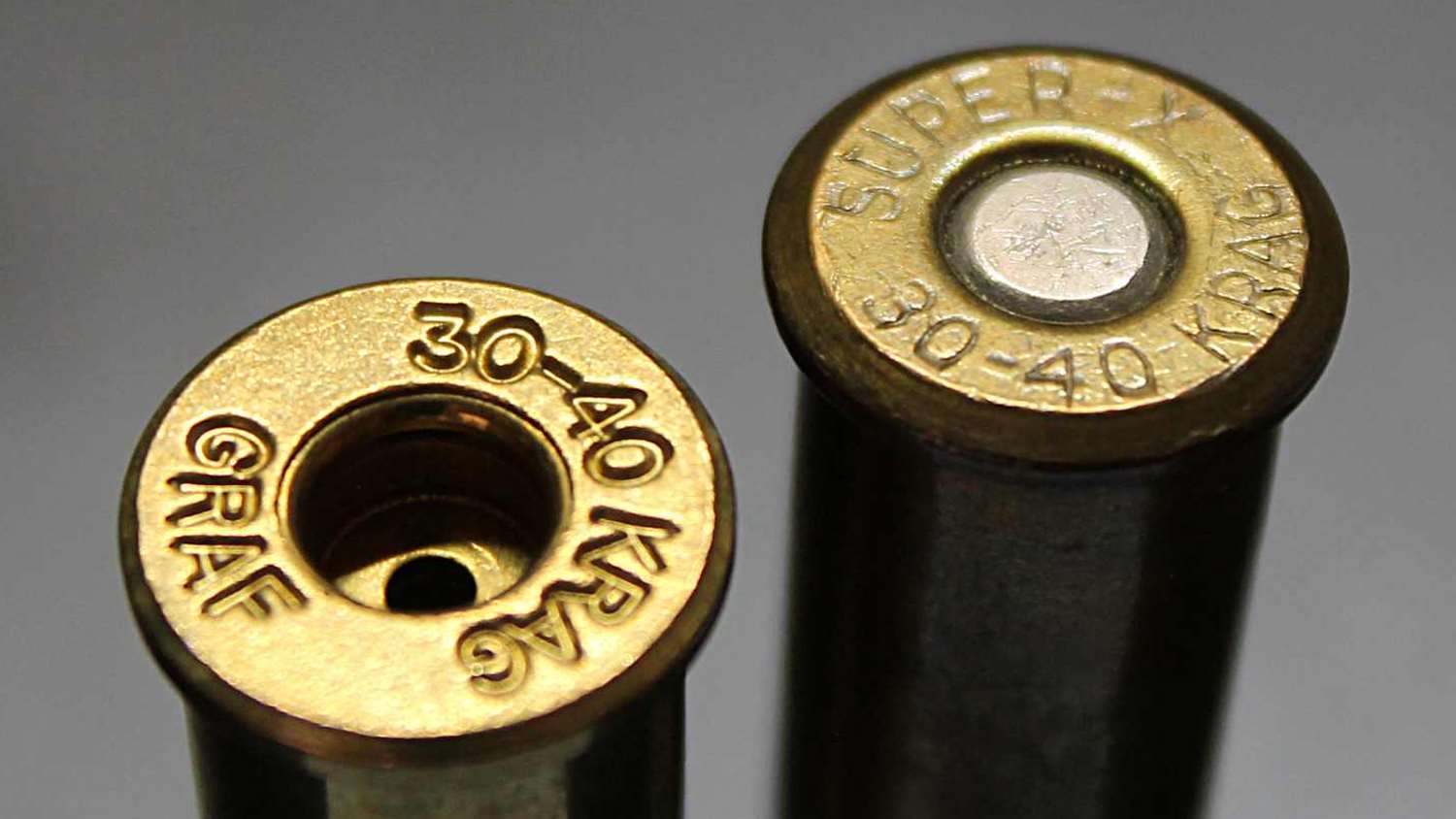
It is possible, if not always entirely satisfactory, to form .30-40 Krag from .303 British cases by simply running the Brit into the Krag full length resizing die. Case necks will be quite short, and the British case rim lacks the Krag’s beveled edge, which some shooters believe may cause balky feeding from the magazine. Others feel the lack of a bevel has no impact on feeding.
Surprisingly, given the age and low-by-modern-standards performance of the cartridge, dies are readily available at non-custom prices and without special ordering, indicating at least a modicum of continued popularity. As with the .30-30, the long neck of the .30-40 case makes for easy resizing and bullet seating. If using cast lead bullets, expanding case mouths slightly with a .30 caliber Lyman M die will prevent deforming bases or shaving lead from bullets.
Shell holders for the .30-40 Krag are Hornady #11, Lee #5, Lyman #7, RCBS #7 and Redding #8. Do note that shell holders are often intended to fit multiple different cases but sometimes fail to fit one or more adequately. Shell holders for .303 British and sometimes for .44 Magnum may work for the Krag, depending upon your specific cases.
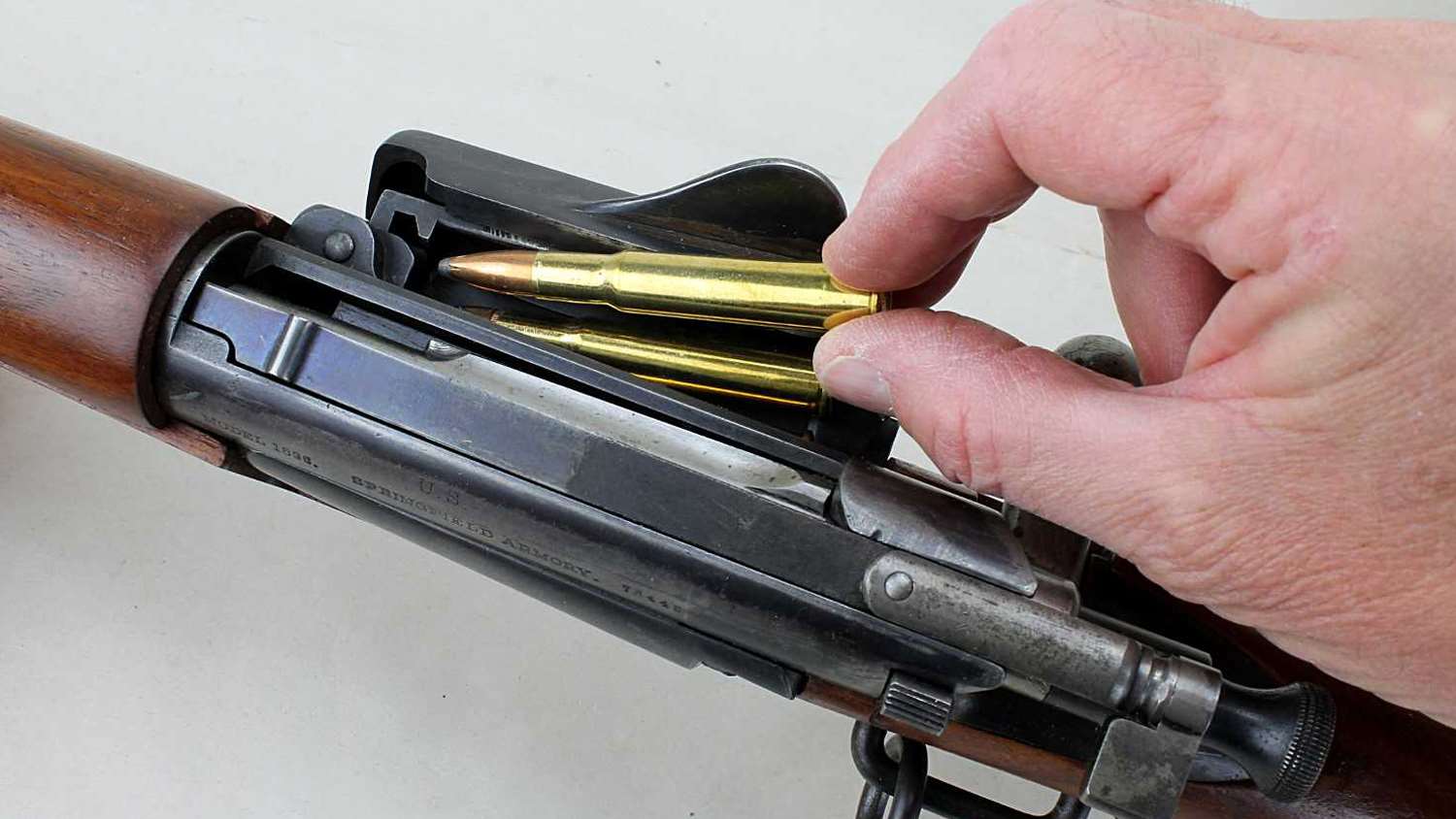
We don’t see very many Krags at the VMR matches, but they do show up here and there, perhaps more often at local club matches than at the Regionals. The Krag represents a most unusual transitionary period in firearms that saw the rapid and simultaneous changeover from black powder to smokeless powder and from single-shot rifles to bolt action repeaters. As such, the Krag holds an exceptional place in American military history, and when we pause to consider, it’s pretty remarkable that we should see the rifle in civilian marksmanship competitions 120 years later.
The .30-40 Krag, almost immediately eclipsed by the .30-06 in performance and popularity, is a hanger-on-er that has refused to die, perhaps at first due to the high quality and low price of surplus rifles, then by the routine availability of its .308-inch bullet and now by the advent of VMR competition. It appears the .30-40 Krag will continue to hang on for the foreseeable future.
More articles by Field Editor Art Merrill:














